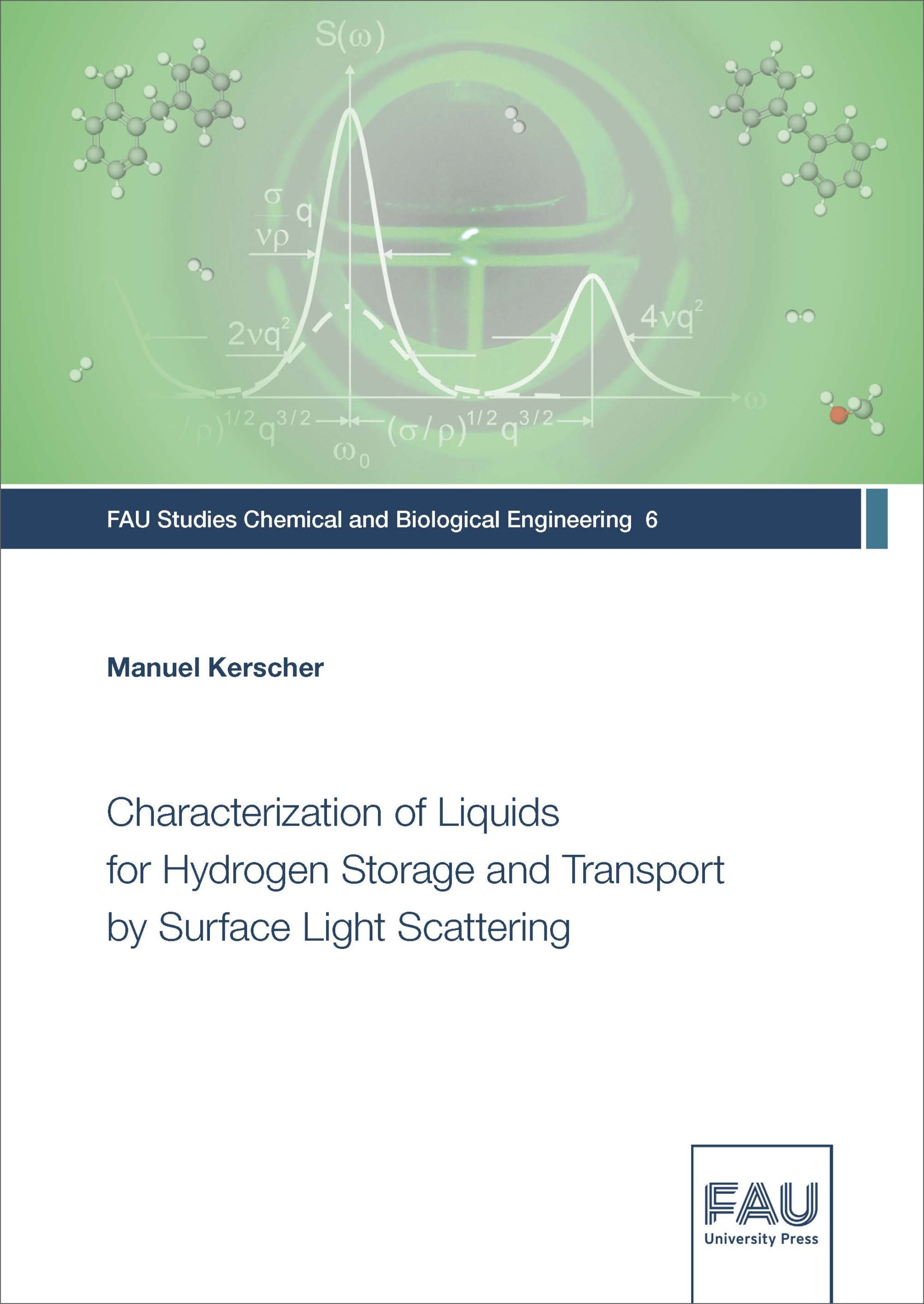Description
This thesis contains an extensive characterization of liquids relevant to hydrogen storage and transport with respect to their thermophysical properties over a broad range of process-relevant conditions. Surface light scattering (SLS) has been employed to simultaneously study the viscosity and interfacial tension of several hydrogen carrier liquids. A particular focus has been put on the investigation of the technically relevant bicyclic liquid organic hydrogen carrier (LOHC) systems based on diphenylmethane (DPM) or benzyltoluene (BT) at temperatures up to 573 K as well as in the presence of molecular hydrogen at pressures up to 8 MPa. Based on systematic experimental investigations involving additionally capillary viscometry, the influence of the degree of hydrogenation, LOHC composition, and process-relevant byproducts on the viscosity and interfacial tension of the DPM- and the BT-based LOHC systems is identified. Meaningful correlations, mixing rules, and prediction schemes for the viscosity and interfacial tension based on the present data are discussed and provided. The experimental results for the thermophysical properties provide a basis for an improved understanding of the structure-property relationships of bicyclic hydrocarbons that have thus far been scarcely studied.
In the context of this work, the applicability of the SLS method was further extended using a new approach for the evaluation of SLS signals recorded from propagating capillary waves close to their transition to overdamped behavior. This development allows for an accurate account of all signal contributions present in this regime and, thus, for a reliable determination of viscosity and interfacial tension at the corresponding state points. Further metrological aspects regarding the capabilities and limitations of SLS are additionally highlighted.
Im Rahmen dieser Arbeit wurde die Anwendbarkeit der SLS-Methode durch einen neuen Ansatz für die Auswertung von SLS-Signalen erweitert, die von fortschreitenden Kapillarwellen nahe ihres Übergangs zu übergedämpftem Verhalten aufgezeichnet wurden. Diese Entwicklung ermöglicht eine genaue Berücksichtigung aller in diesem Regime vorhandenen Signalbeiträge und damit eine zuverlässige Bestimmung von Viskosität und Grenzflächenspannung an den entsprechenden Zustandspunkten. Weitere messtechnische Aspekte hinsichtlich der Möglichkeiten und Grenzen von SLS werden darüber hinaus beleuchtet.


Reviews
There are no reviews yet.